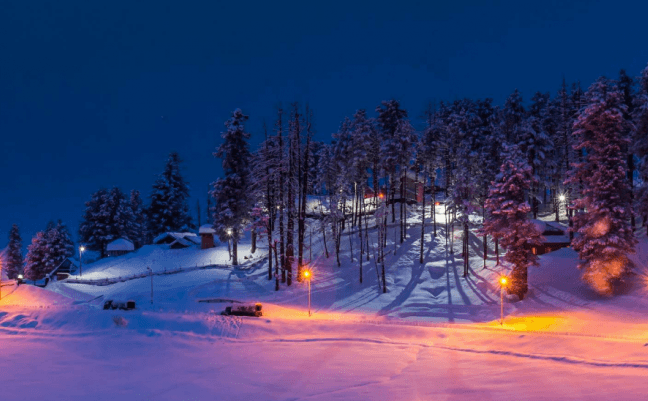Context:
According to Indian Metrological Data (IMD) data, the snowfall has been declining and caused a dry winter in the Kashmir region.
About IMD data:
- Winter precipitation in Jammu and Kashmir is mainly in the form of snowfall. Normally, the region gets its first snowfall in the first half of December, and then through most of January.
- Jammu and Kashmir saw an 80 percent rainfall deficit in December, and a 100 percent (absolutely no rain) deficit in January so far. Therefore, it has been mostly dry this season.
- Ladakh has had no precipitation at all in December or January.
Reasons for the decline in snowfall and cause of dry winter:
Western Disturbances:
- Winter precipitation in the Himalayan region, including Kashmir, is primarily caused by Western Disturbances.
- These are large, eastward-moving weather systems that bring rain and snow and originate beyond Afghanistan and Iran, picking up moisture from the Mediterranean Sea and even the Atlantic Ocean.
- In recent years, there has been a declining trend in the frequency and intensity of Western Disturbances, affecting the amount of precipitation in the northern regions, including Jammu & Kashmir.
El Nino:
- It is a climate phenomenon characterized by the warming of sea surface temperatures in the eastern Pacific Ocean.
- The prevailing El Nino event in the eastern Pacific Ocean is considered an additional factor contributing to the scarcity of snowfall in Kashmir this year.
- El Nino can influence atmospheric circulation patterns, affecting weather conditions globally. In this case, it might be contributing to the deficit precipitation in the region
Rising Temperatures: Kashmir is experiencing an overall rise in temperatures, particularly in higher elevations. This accelerates snowmelt and reduces the accumulation of snowfall.
Climate Change: It is a significant contributor to the declining snowfall trend. Altered weather patterns and rising temperatures are likely key factors influencing the region’s precipitation patterns.
Impacts of the Dry Winter:
Short-term:
- Increased risk of forest fires, agricultural drought, and a decline in crop production.
- Reduced water availability for drinking and irrigation due to diminished groundwater recharge.
- Early flowering in spring due to warm temperatures, posing a potential threat to crops.
Long-term:
- Less hydroelectricity generation due to reduced water flow in rivers.
- Accelerated glacier melt, affecting water resources and environmental equilibrium.
- Adverse impact on drinking water supply owing to diminished snow accumulation.
Importance of Snow in Kashmir:
Optimal Snowfall Season:
- From the arrival of winter to chilai Kalan, snowfall might play an important role. Snowfall should happen at the start of January then it keeps for a longer time. The harsh cold season starts from the 21st of December to 31 of January.
Year-Round Significance:
- Snow remains significant not only in winter but throughout all four seasons in Kashmir.
- A major tourist attraction, contributing to the economic and cultural value of the region.
Captivating Spring:
- From March 21 to June 21, Kashmir undergoes a captivating transformation into a lush green paradise.
- Tulip and Mughal gardens, including Nishat and Shalimar, become major attractions.
Winter Enchantment:
- Winter metamorphoses Kashmir into a globally renowned wonderland.
- Majestic snow-clad mountains allure tourists worldwide, elevating the valley’s natural beauty.
- The magical winter snowfall adds an exceptional touch to the season.
Environmental Essence:
- Winter snow becomes the soul of Kashmir, shaping the landscape with its transformative presence.
- Its ability to preserve soil moisture contributes to the overall allure of the region.
- Universally acknowledged for its environmental importance.
Water Source:
- Snow, in its solid form, is indispensable for northern regions like Kashmir.
- Glaciers on snow-covered mountains (Lidder, Shaliganag, Doodhganga) serve as vital water sources.
- Essential for drinking water supply and maintaining a cool environment in the summers.
Local Well-being:
- Snow in Kashmir plays a pivotal role in maintaining the local climate, supporting winter crops and horticulture.
- Ensures water availability in streams and rivers, significantly contributing to the local economy.
Way Forward
- The dry winter in Kashmir serves as a poignant reminder of the vulnerability of mountain ecosystems to the impacts of climate change.
- It underscores the immediate need for proactive measures at individual, community, and global levels to protect the beauty and well-being of Kashmir.
- A unified commitment to environmental initiatives is paramount in ensuring a sustainable future for the region and its residents.

